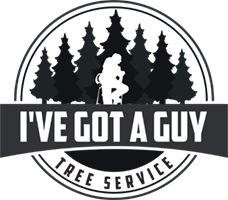We believe trees are one of the earth’s most precious resources. That’s why we’ve made it our mission to help you care for them.
Here are a few FAQs and common problems we’ve run into after working for 40 years in the field of tree care and maintenance.
PRICING
How much does quality tree care cost?
Prices are based on location, level of difficulty and total time required for the job. We will never recommend performing any unnecessary maintenance. But preventative care for trees and avoiding disease, decay, insect damage and other weaknesses while tress are still healthy keep you from having to remove them in the long-run.
FERTILIZER
Should you fertilize your trees?
Yes. Your trees need fertilizer!
Fertilization is the number one thing you can do to help the health and vitality of your entire landscape.
TREE TOPPING
Should you top off your trees?
We never cut the tops off of trees! If anyone suggests topping your trees then they’re not professionals. Topping will cause rot, decay, disease and weakened bark and limbs.
CODOMINANT LIMBS
What are codominant limbs?
If two portions of trees split into dominant limbs, our light reduction and dynamic cabling techniques will keep them from splitting in half and dying.
Careful — removing limbs improperly will starve and kill trees.
DRAINAGE
Proper drainage is often overlooked and essential to your trees’ health.
We can consult with you about proper drainage techniques.
PRUNING
How much should you prune your trees?
Never take more than a third of the foliage off your trees! And beware of incorrect shaping.
OLDER TREE CARE
You should always start shaping and caring for a tree when it’s still young. But if you’ve inherited an older tree, you should pay particular attention to proper pruning techniques and common tree pathogens.
PATHOGENS
Unfortunately, there are a variety of insect and fungi that can attack trees in the Pacific Northwest.
Watch out for mushrooms on a tree or at root structures.
MUSHROOMS
Mushroom growth on a tree bark is a good indication that trees are suffering from armillaria and will attack the roots.
ARMILLARIA
Armillaria is a destructive forest pathogen. There are several species of armillaria.
Contact us for more about how to keep your trees free of this common parasite.
BARK INVERSION
Call for us to learn more about how we care for inverted bark and grafting.
DEAD WOODING
Dead wooding, or removing dead wood around trees, and properly pruning are essential to avoiding rot.
CHOKING
Be ware of too much dirt around the structure of your trees. Extra dirt will choke and kill trees.
Contact us for more information.
